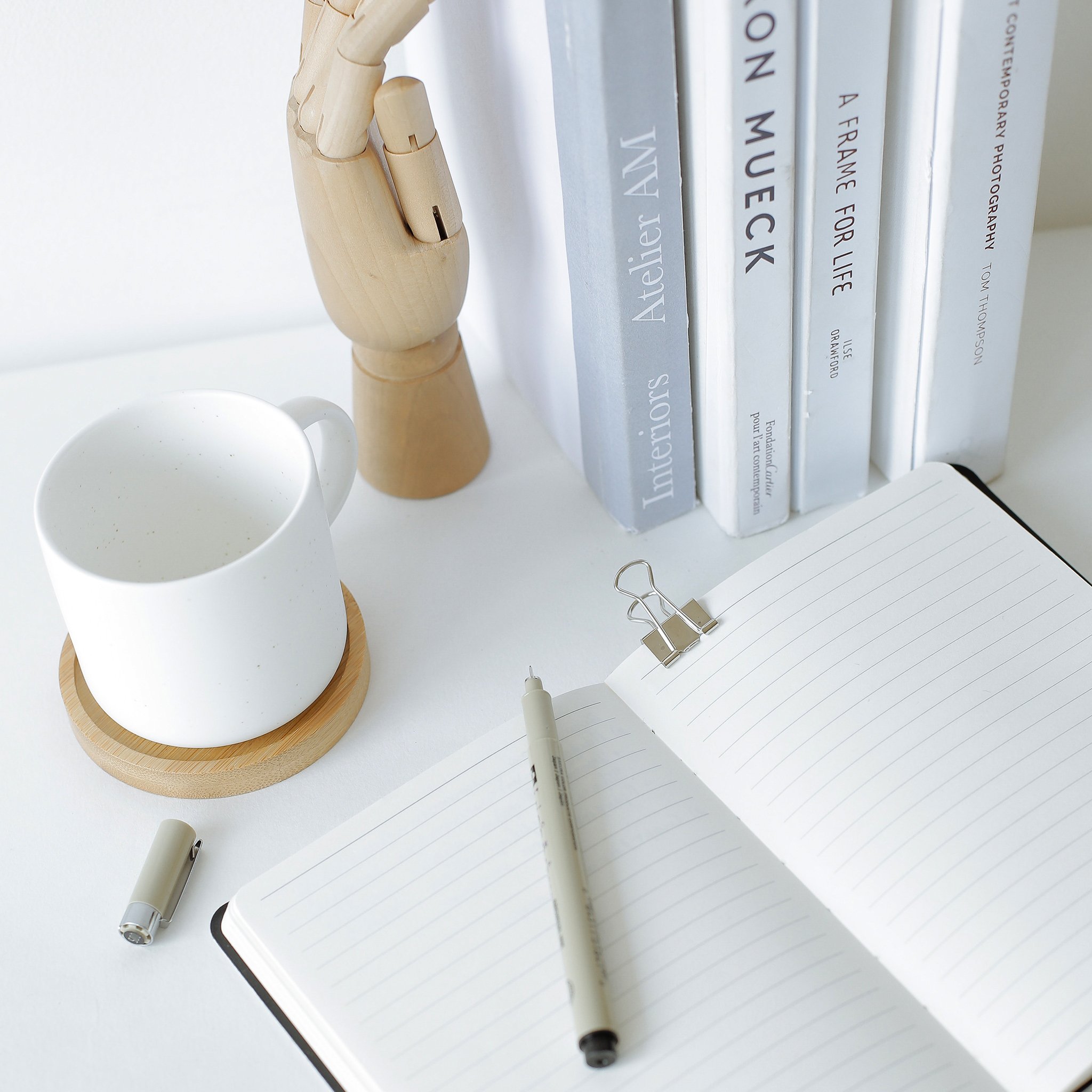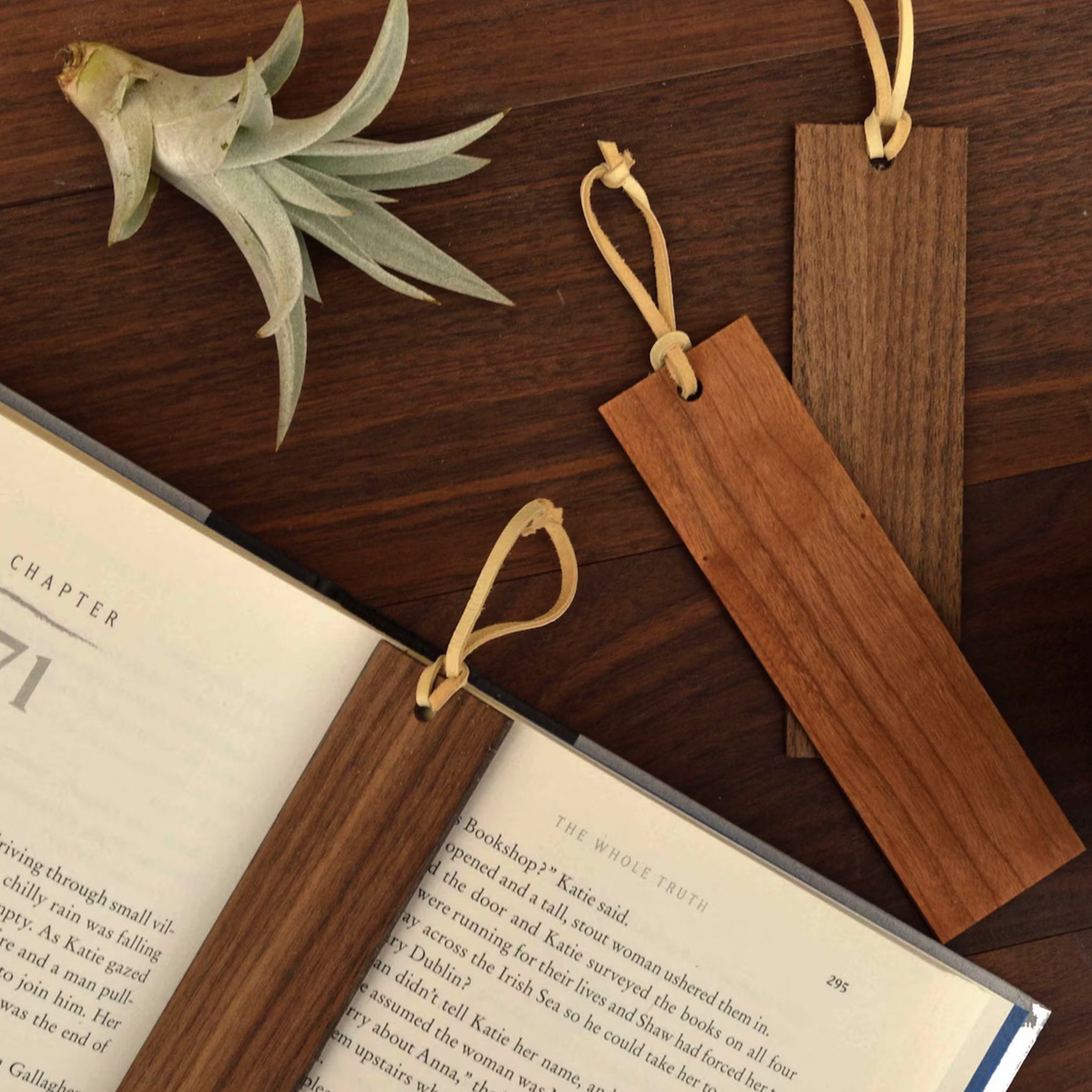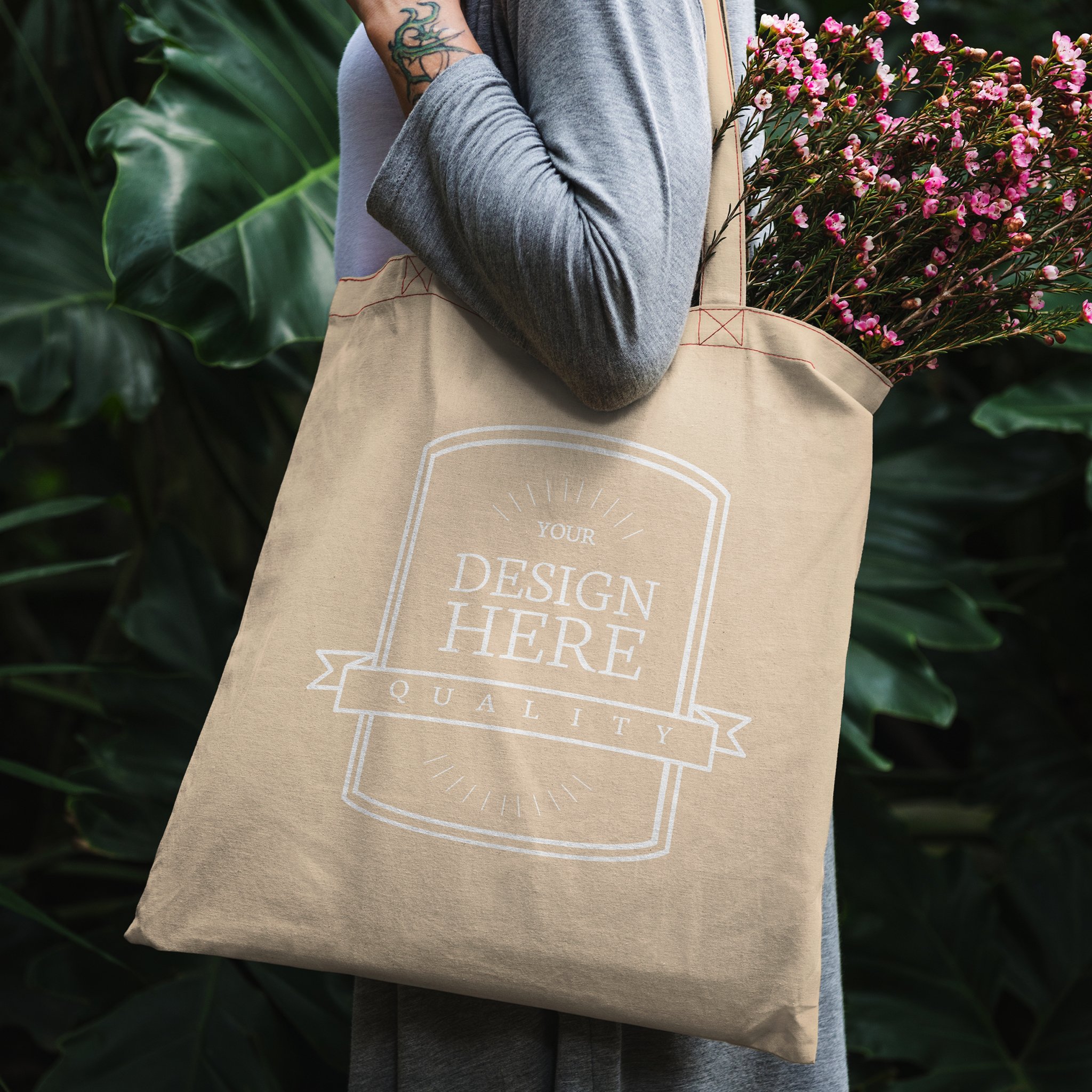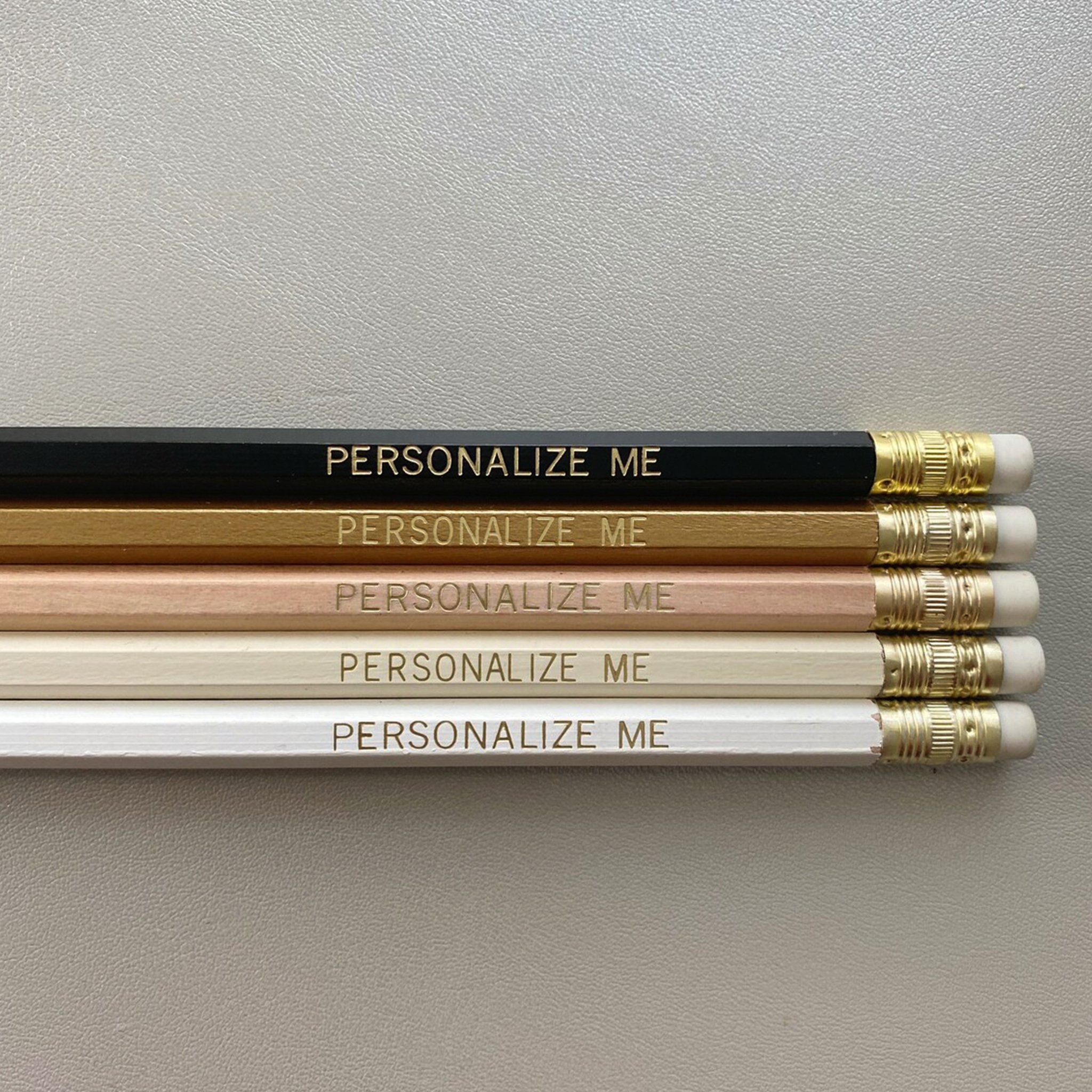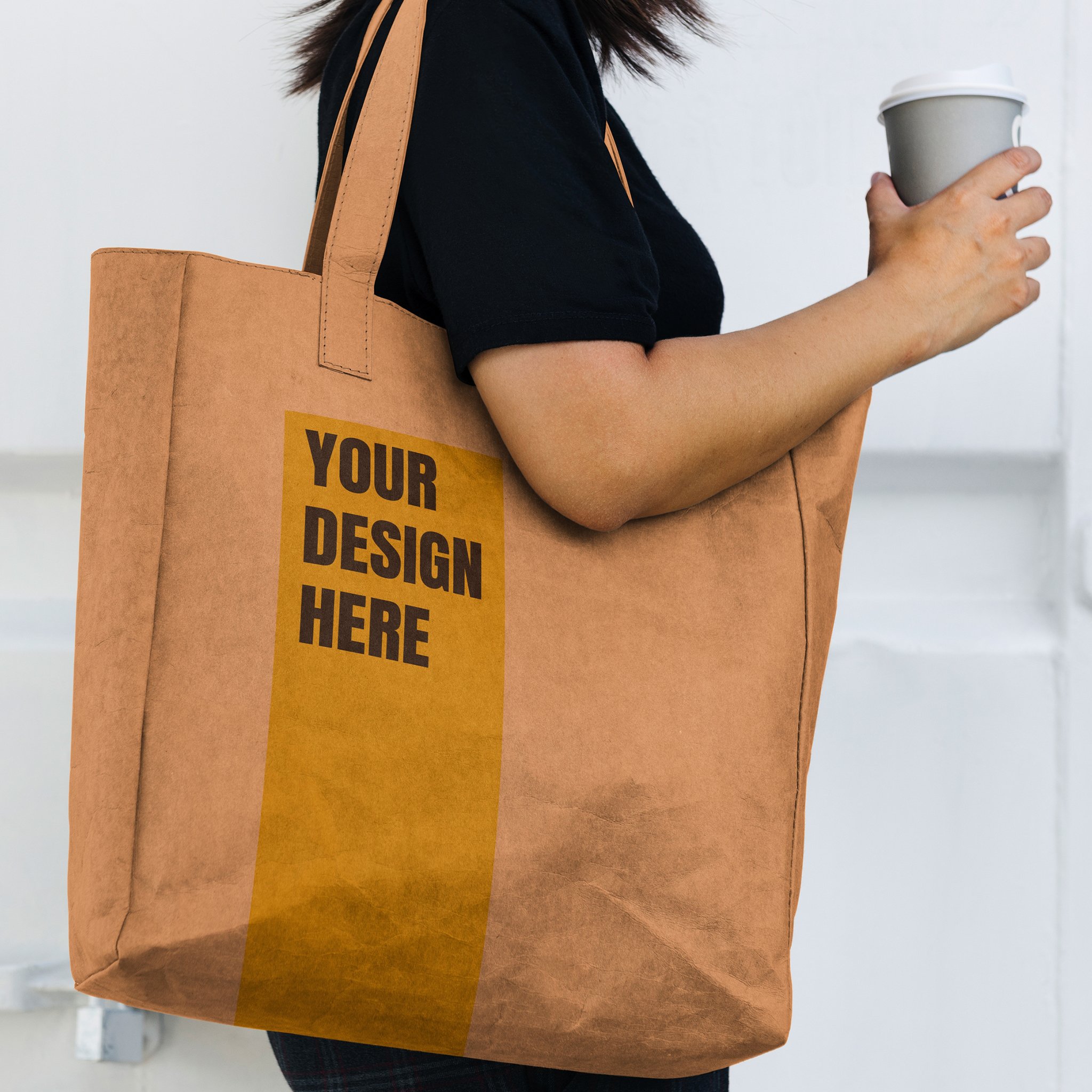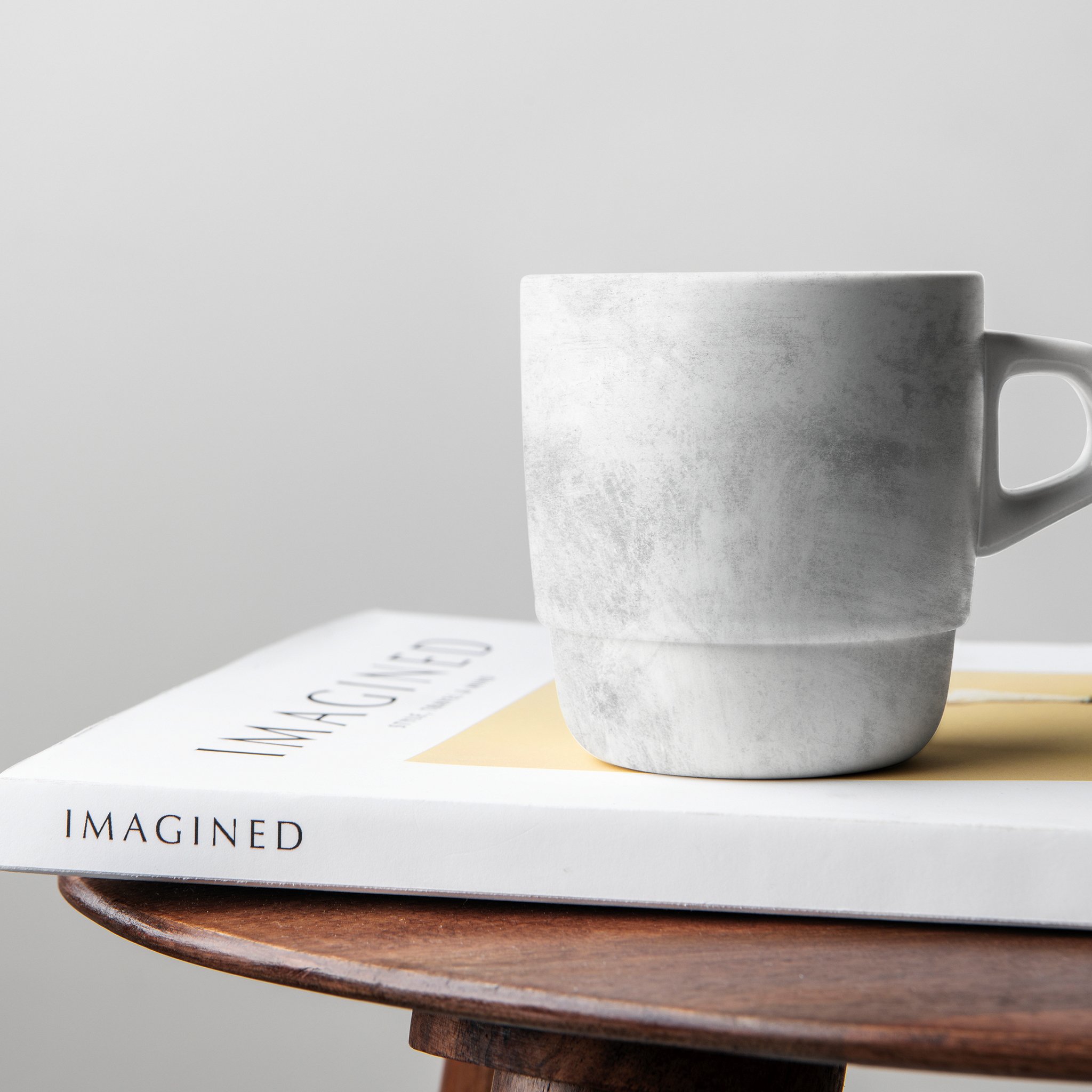GET ELITE STRAIGHT IN YOUR INBOX!
Stay up-to-date on all things interior design, business, lifestyle, and more with our weekly newsletter that you’ll actually want to read!
The Advantages of Journaling
/As someone who is always on the hunt for new and creative ways to stay organized, focused, and inspired, have you ever considered taking up journaling? It might seem like a simple activity, but the benefits of journaling are vast and can have a positive impact on your personal and professional life. Renowned individuals across all fields and moments in time have sworn by the practice, from Frida Kahlo and Marie Curie to Oprah Winfrey. So read on to find out what journaling can do for you.
The best journaling method for you will depend on your preferences and goals. Here are some of the most popular approaches:
Stream of consciousness writing: Writing whatever comes to mind without any editing or structure
Bullet journaling: Using symbols and short phrases to track tasks, goals, and other important information in a structured and organized way
Gratitude journals: Focusing on writing down things you are thankful for
Dream journals: Recording and analyzing your dreams
Art journaling: Combining writing with artistic expression, including collages, drawings, paintings, or any other form of visual art
Ultimately, the key is to find a method that works for you and to be consistent in your practice. It’s all about seeing what style best fits your creative inclinations and what you hope to gain from the practice. So, before you start, consider the advantages of journaling that appeal to you the most. Do you want to improve your productivity, gain a better understanding of your emotions, or document your experiences? Answering these questions will help you discern which style of journaling to try.
Here are just a few of the advantages of journaling:
Improved mental clarity and focus
Journaling allows you to get your thoughts and ideas out of your head and onto paper, which can help you process and make sense of them. This can lead to increased mental clarity and focus, which is essential for staying on top of all your design and life projects.
Enhanced creativity
By writing down your ideas, sketches, and inspiration in a journal, you create a physical record of your creative process. This can help you tap into your inner creativity and generate new and innovative ideas.
Reduced stress and anxiety
Interior design can be a stressful and high-pressure industry, but journaling can provide an outlet for your emotions and help you manage your stress levels. Writing down your worries and concerns can help you release them from your mind and gain a sense of control over them.
Increased self-awareness
Regular journaling can increase your self-awareness and emotional intelligence by allowing you to gain a deeper understanding of your behavior, habits, and thought patterns. This can provide valuable insights that can be applied to both your personal and professional life.
Greater productivity and organization
Journaling can help you stay organized and focused on your goals. By setting daily or weekly tasks and recording your progress, you can track your productivity and make adjustments to your schedule or priorities as needed.
Stronger problem-solving skills
When you write down your problems, you can analyze them from different angles and develop solutions that you might not have considered before. By exploring your options and weighing the pros and cons, you can gain insight and confidence in your decision-making abilities.
Enhanced memory and learning
Writing down your thoughts and experiences can help you remember them better. By creating a written record, you can also later review your notes and gain a deeper understanding of the topics you are working on or contemplating.
Increased gratitude and positivity
By writing down things you are grateful for, positive experiences, and happy memories, you can train your brain to focus on the good things in your life. This can lead to increased happiness, reduced stress, and just a more positive outlook on life.
Journaling is a powerful tool that can be done at any time of day, and all you really need is a notebook and a pen (although fancy pens are fun, too). By taking a few minutes each day, you are actually making space for personal growth. So, I hope you are inspired to give journaling a try!
xx, Danae
Shop The Look: Gardening!
/With spring in full swing, it's time to start thinking about gardening! We have collected a few of our favorite gardening items for our latest Shop the Look board! Come shopping with us!
The Rise of Biophilic Design
/With hashtags like #urbanjungle and #sustainablehome trending on social media, it's clear that many people are looking to bring a bit of nature into their lifestyles and living spaces. This desire for a connection with nature helps to explain the rise of biophilic design, a term that simply means "nature lover" design. So let’s have a look at where this concept came from and how you can incorporate it into your own designs!
Biophilic design has its roots in the concept of biophilia introduced by biologist E.O. Wilson in the 1980s. Stephen Kellert, a prominent proponent of biophilic design, expanded upon this idea by describing six elements of it.
Natural shapes and forms
Light and space
Natural processes and patterns
Environmental features
Plant-based relationships
Evolved human-nature relationships
In today's fast-paced and technology-driven world, people are seeking refuge from the stress and noise of modern life. Biophilic design offers a way to bring the tranquility and beauty of the natural world into our built environments, creating spaces that promote relaxation, creativity, and wellbeing.
In fact, recent research has shown that biophilic design can have a significant impact on people's health and productivity. For example, a study by Harvard University found that people who worked in environments with natural elements like plants and sunlight were more productive and had better overall health than those who worked in traditional office settings.
A famous example of this is the Amazon Spheres in Seattle. These three interconnected glass domes are filled with more than 40,000 plants from around the world, creating a lush and vibrant indoor rainforest. The Spheres were designed to provide Amazon employees with a unique and inspiring workspace, and they have become a popular tourist attraction as well.
And besides its wellness and productivity benefits, biophilic design can also be visually stunning. For example, Frank Lloyd Wright's Fallingwater, a house built over a waterfall in Pennsylvania, is a classic example. The house is integrated into the surrounding natural environment, with large windows that offer sweeping views of the forest and waterfall.
So, if you're looking to incorporate biophilic design into your projects, there are plenty of reasons to do so. Many interior designers would agree that it’s best not to pack so many plants into a space that it looks like a post-apocalyptic plant takeover. But you can artfully apply some principles of biophilic design. Here are a few tips:
Bring in natural light
Natural light is one of the easiest ways to connect a space to the outdoors. Consider adding skylights, large windows, or even light wells to bring in more natural light.
Use natural materials
Incorporating natural materials like wood, stone, clay, natural fibers, and plants can help create a more organic and calming environment. Consider using reclaimed wood or stone to add texture and depth to a space.
Create indoor gardens
Plants not only add visual interest to a space, but they also help purify the air. Consider adding living walls, potted plants, or even a small indoor garden to your projects. Be mindful of clients’ allergies and plants that are toxic to pets, including aloe vera plants, sago palms, and rubber plants.
Consider the views
When designing a space, think about the views that will be visible from inside. If there are trees, mountains, or other natural elements outside, try to frame them in a way that creates a connection between the indoors and outdoors.
Keep it simple
Biophilic design is all about simplicity and creating a connection with nature. Don't overcomplicate your designs with too many competing elements. Instead, focus on creating a calming and natural environment that invites people to relax and connect with the space.
Biophilic design is a trend that is here to stay. By incorporating natural elements into your designs, you can create spaces that are not only beautiful but also beneficial to people's health and wellbeing. So, experiment with natural materials, indoor gardens, and simple design elements. Your clients will thank you!
xx, Danae
Enrollment for the Interior Design Standard opens today!
Now is the time to take action and invest in yourself. It's time to level up and catapult your business forward - the ROI will be immeasurable. Enrollment for the Interior Design Standard closes on April 5th, 2023. Sign up today.
Shop The Look: Spring Fashion!
/Spring into the upcoming season with style!
It's our Shop the Look: Spring Fashion Edition! We've collected some of our favorite items, like stylish dresses, skirts, shoes, totes, and more!
9 Ways to Make Your Interior Design Portfolio Shine
/As an interior designer, your portfolio is your most valuable marketing tool. It showcases your skills, creativity, and professionalism to potential clients and collaborators. But merely having a portfolio is not enough. You need to make it shine and speak for itself. Here are nine ways to achieve that:
1. Curate your projects carefully. You don't have to include everything you have done in your portfolio. Choose the projects that best represent your style, strengths, and diversity. Ideally, you should have at least five to ten projects with photos that tell a story and show the process and outcome of your design. Make sure that your portfolio reflects your target audience and niche.
2. Invest in quality photography. Your portfolio is only as good as your photos. Therefore, it's best to hire a professional photographer or otherwise learn how to take good photos yourself. Make sure that your photos are well-lit, well-composed, and in focus. Avoid using filters, heavy editing, or low-resolution images. You want your photos to be realistic, accurate, and appealing.
3. Use a clean layout. Your portfolio should be visually pleasing and easy to navigate. Use a layout that accentuates your photos and lets them breathe. Avoid clutter, too many fonts, different colors, or graphics. Use plenty of white space, grids, or templates to organize your projects. Adobe Illustrator and Canva are great tools and offer templates, or you can purchase one on Etsy. Make sure that your portfolio is mobile-friendly, accessible, and optimized for SEO.
4. Create in multiple formats. To ensure that your work reaches a wider audience, it's a good idea to have your portfolio available in various formats. While your website and social media profiles can serve as a digital portfolio, consider expanding your options with formats such as a printable PDF. Another alternative is creating a corporate video that provides a glimpse of your team and some of your notable projects. For those with an extensive collection of projects, a bookazine may also be a great way to showcase your work in a tactile and visually appealing format.
5. Use a consistent brand identity. It's crucial to have a consistent appearance across all of your marketing materials, including your portfolio, website, and social media profiles. This includes using the same text fonts throughout to maintain a cohesive look and feel. By having a strong brand identity kit, you create a sense of professionalism and reliability. Consult a graphic designer for help putting together an attractive and complete kit.
6. Tell a story with your projects. Your portfolio should not be just a collection of photos. It should tell a story about your design process, inspiration, challenges, and solutions. Use captions, headings, or descriptions to provide context and insights into your projects. Share your design philosophy, values, and goals. Show your potential clients why you are different and why they should hire you. Just keep in mind that the photos are the main attraction, so the text should take up minimal space.
7. Show your versatility and range. Your portfolio should include projects that demonstrate your ability to work with different styles, spaces, budgets, and clients. Show your creativity, innovation, and problem-solving skills. Highlight your strengths and unique selling points. Be proud of your accomplishments and don't be afraid to show them off.
8. Only use your own photos. If you don't have many completed project photos yet, you can still showcase your skills, creativity, and vision by creating concept designs, mood boards, or sketches of your dream projects. 3D renders can also be an excellent substitute until you have more photos. Collaborating with other designers, photographers, or artists to create joint projects or mock-ups is another option to demonstrate your abilities. That being said, many interior designers like to share other designers’ work on social media as another way of showing what inspires them, but always giving due credit.
9. Include your contact information and a call to action. Your portfolio should also be a marketing tool that encourages potential clients to contact you. Therefore, make sure that your portfolio includes your contact information, such as your email, phone number, website, or social media. Make it easy for clients to reach you and learn more about your services. Also, include a call to action, such as "Schedule a consultation," "Get a quote," or "Learn more." Encourage your viewers to take action and engage with you.
Your portfolio is a representation of your design business and should reflect your brand, style, and professionalism. It is, in essence, your virtual showroom, and should capture the attention of potential clients and collaborators, making them excited to work with you. So, dedicate the time, effort, and resources that it takes to make your portfolio shine.
xx, Danae
Mix Up Your Morning Coffee Routine
/Is coffee fueling your mornings, or even your entire day? While there's no denying that a cup of coffee can be a great way to start your day, there are reasons to switch things up. Whether you want to cut back on your caffeine intake or simply try something different, there are plenty of appealing alternatives, each with unique flavors and health benefits, that could become a new staple in your morning ritual.
Green Tea
Green tea is a popular alternative to coffee, with its distinct flavor profile and health benefits. It is rich in antioxidants and has a calming effect (but won't put you back to sleep).
Matcha
Matcha is a type of green tea that has recently surged in popularity, rich in antioxidants and with a unique, earthy flavor. It is often served as a latte, making it a great alternative to coffee for those who enjoy a creamy, frothy beverage.
Black Tea
Black tea comes in many varieties, including those that taste like cappuccino, such as Teeccino. It has a bold flavor and less caffeine than coffee, making it an ideal option for those looking for a change of pace.
Kombucha
Kombucha is a fermented tea that has a tangy, slightly sweet flavor, often available in different flavors. It's packed with probiotics, so it’s an excellent choice for those looking to boost their gut health.
Chicory Coffee
Chicory coffee is made from the root of the chicory plant and has a rich, nutty flavor that can satisfy your coffee craving without the caffeine. Plus, it comes in instant powder form, making it quick and convenient.
Golden Milk
Golden milk has a warm, spicy flavor and is made with turmeric, which has anti-inflammatory properties, along with other spices. It's perfect if you want to enjoy a comforting, healthy morning drink.
Lemon Water
Lemon water is a simple, refreshing alternative to coffee. It's hydrating, high in Vitamin C, and can help to flush out toxins from your body.
Yerba Mate
Yerba mate is a traditional South American drink that's high in caffeine and has a grassy, slightly bitter flavor. Give it a chance, and it just might be your new favorite morning drink that provides a boost of energy.
Mushroom Coffee
If you must have your coffee but still want to try another variety, mushroom coffee is made with powdered mushrooms (without actually tasting like mushrooms) and is said to have a number of health benefits, including improved focus and energy.
One last word: whatever alternative you choose, the most important thing is to find a morning drink that makes you feel good. Pay attention to how your body and energy feel after trying different morning drinks, and be sure to savor a moment of leisure with your sips. So experiment with something new and see what it can bring to your day!
xx, Danae
Shop the Look: Spring Décor
/The dreariness of winter can be such a bore; it's truly the change of spring that I adore.
Celebrate in style this Spring season with NEW decor!
Check out our fresh decor collection of seasonal must-haves on our latest Shop The Look board!
Shop The Look: The Best Clothing + Items for Easy Vacation Traveling
/With spring vacations on everyone's mind, let's go shopping for The Best Clothing and Items for Easy Vacation Traveling! We have curated some of our favorites, from bags to hats; we've got you covered!
A Sun-Filled Sojourn: Discover Australia's Lizard Island
/Secluded within a national park and renown for abundant Australian flora and fauna, Lizard Island beckons both adventurers and leisure-seekers. A prime location on the Great Barrier Reef grants easy access to one of the world’s most coveted natural wonders, while ample amenities and services ensure indelible experiences. Explore the natural beauty or opt to lounge at the pool, beach, spa, or private chartered yacht for a truly unforgettable getaway.
Stay: While a variety of suites and rooms are offered, ultimate luxury is found at The House at Lizard. This modern three-bedroom villa features wellness amenities including outdoor baths, a private swimming pool, adjoining yoga deck, and a rooftop hot tub along with spacious bedrooms and floor-to-ceiling island views from every turn.
Staying at The House has its privileges, like the intuitive service of a Private Host who will curate your dream itinerary and attend to your every request, and a private chef and sommelier on-hand for all meals. Other notable inclusions are access to two private beaches, unlimited use of “Mojo” (a twin outboard Searanger boat), naturalist-led tours, chauffeured transfers to the resort and airport, and more.
Savor: Your all-inclusive stay includes gourmet meals, unlimited non-alcoholic beverages, wine, beer, and spirits, and an in-room mini bar. Multiple dining options are available from elevated to casual. Take in ocean views and a daily rotating menu at Salt Water, which serves up modern Australian fare infused with Asian flavors — all crafted with local produce and fresh seafood. For intimate, exclusive dining, reserve the Degustation Dining experience — available for only two couples per evening. Meet with your chef prior to dinner to discuss your seven-course meal and matching wine selection. Minimal service interruptions ensure ultimate privacy.
See & Do: The Great Barrier Reef is the world’s largest living coral reef system and the seventh Wonder of the World. Snorkel, scuba dive, or swim with schools of colorful fish and other ocean life among a rainbow of coral. Snorkeling gear is available for the duration of your stay, along with a selection of dive charters and scuba classes. For those who prefer to stay dryer, rent a sea kayak, which offers a window into the underwater world from above the waterline.
Getting There: Scheduled twice daily, take a scenic 60-minute flight between Cairns and Lizard Island — with aerial views of the Great Barrier Reef, the flight is a highlight of the journey.
For more information on this trip please feel free to contact Staci Spittler with Travelstix at staci@travelstix.com. More on Staci here - Signature Travel Network.
xx, Danae
What's New Industry Partners!
/I am always trying to find products and services in addition to what we offer at Elite Design Assistants in the interior design industry that would greatly benefit all designers. Below is a list of some great products and services that many of our clients use. I am an affiliate for most of them so I do get a commission if you purchase from my link.
NEW! The Key – Fee Calculator
The Key is a FEE CALCULATOR from interior designer business coach Nancy Ganzekaufer. Whether you work on e-design, décor only, new builds, remodels or full-service, The KEY does the math for you!
Enter Your Desired Hourly Rate
Estimate Hours Per Room
Estimate Sales Tax on Services and/or Goods
Estimate Furniture / Décor Investment
OPENING SOON! The Standard
Grow your firm into a thriving luxury design business while giving yourself more freedom, creativity and joy. The Standard is a course that walks you through streamling and organizing your process, attracting your idea high-end luxury clients and provides you all the templates and information you need to start landing luxury clients NOW!
Metrique Solutions – The Ultimate Money Dashboard
This is perfect for scaling your service-based business, especially if you aren’t a ‘money person’. This platform integrates with your most-loved financial tools and puts all your money data in one easy-to-understand dashboard.
The Designer’s Collaborative – Buying Group
I’m always asked about buying groups/clubs and this is one I recommend! Many of my clients use The Designer’s Collaborative and I’ve always heard great things! Tell them Danae sent you. 😊
SideDoor
SideDoor is a behind-the-scenes service for independent interior designers, e-designers, stagers, and home influencers. They built proprietary tools that allow you to share your favorite products directly with clients and to make your website and social media pages shoppable. As of the time I wrote this (2/7/23) there are over 4,000 users, 150 vendors and the average commission is 30%. Create your own online shop using SideDoor and make some passive income!
If there are other products and services you are searching for, please let me know! We love researching the industry to find the best recommendations to make interior designers lives easier and more joyful!
xx, Danae
Best Promotional Products for Interior Designers
/Showcasing your attention to detail and aesthetic taste starts well before a project begins and goes beyond handing over your very attractive business card. Interior designers can leave a lasting impression on their clients–as well as other industry professionals–and enhance their brand image through the use of promotional products. Every item that your clients (past, present, or future) receive from you serves as a reflection of the quality and style you bring to your projects. Not only do these products serve as a reminder of your services, but they also have the potential to encourage word-of-mouth referrals. A polished appearance featuring your branding or logo builds trust and reinforces your professional image.
When selecting promotional products, it's important to consider a few key factors. The quality of the item should align with your high standards as an interior designer. It's also wise to think about its practicality or usefulness for your clients on a regular basis. The style of the item should reflect your brand's unique personality and make a statement. Lastly, ensure that the item offers good value for your investment.
All of that said, I’ve rounded up some of the best promotional products for interior designers, from classic to more original.
Notebooks
From loose leaf paper you may use in client meetings to the folders with documents you hand off, your thoughtfully designed logo should appear on all of them. But take it a step further and gift notebooks that clients will use on other occasions.
Pencils
Pens are a typical promotional product, but pencils are often more cost effective and it is easier to find an attractive and customizable model. Plus, pencils are sure to be picked up, borrowed, and passed through many different hands!
Tote bags
They’re not just great for design conventions. With a cool design and your logo, your company will get exposure wherever the bag is carried around.
Bottle openers
Let them associate your firm with moments of refreshment. Tell them that it’s a gift to open a bottle of celebratory champagne at the time of their new house reveal!
Ceramic mugs
While this is a common promotional product, it’s not so common to find an aesthetically pleasing mug with a tastefully placed logo. But they’re out there, and if anyone can find them, it’s you.
Coasters
A practical and decorative element, drink coasters are a gift that will protect the surface of that beloved furniture and remind them of you.
Bookmarks
A bookmark made of an appealing and meaningful material with your logo will be the perfect complement to a beautiful coffee table book.
Glassware
Something to convey a more sophisticated message, perhaps as an onboarding gift with a larger client, you can offer a glass carafe engraved with your logo.
Slippers
Spa-like slippers say that you know how to create a luxurious atmosphere, and it’s an item that will be appreciated.
Your Design Here
You know your company and niche best. With so many options available online now, use your imagination to think of nearly any small object that represents your company and get it customized!
So get your name out there and establish a positive image for your interior design company with promotional products. Looking for something even more special to gift a client? Check out our post about gift ideas for interior design clients.
xx, Danae
The KEY™: The Designer’s Ultimate Pricing Tool
/One of my favorite things is to keep interior designers abreast of what’s NEW in the industry and I found you a new FEE CALCULATOR. Check this out!
Attention: Interior Designers
Ready to maximize your profitability?
Then you need The KEY™!
The KEY™: The Designer’s Ultimate Pricing Tool was developed by well-known Business Coach, Certified Body Language Trainer, and best-selling author, Nancy Ganzekaufer.
Proven successful by 100's of designers, I want YOU to reap the benefits of this easy-to-use pricing tool!
This is the ONLY pricing product you need to realize your highest profit margins. The KEY™ lets you quickly and accurately calculate pricing estimates for your clients...
>> NO MATTER WHICH TYPE OF DESIGN SERVICES YOU OFFER! <<
Yes, you read that right. And it gets better!
The KEY™ includes a step-by-step video training that explains how to use the Pricing Tool, reducing your learning curve to almost zero. That means as soon as you grab your copy, you can benefit from it IMMEDIATELY!
The KEY™ also includes these essential bonus resources:
✔️ Project Scope Planner
Helps you think through every aspect of your project so you include each and every detail
✔️ Good, Better, Best Guide
A pricing guide to help you set expectations for your clients on the appropriate investment amounts (aka budgets) for each room
✔️ Client Proposal Templates
Four (4) fully customizable Canva Proposal Templates that align perfectly with The KEY™: The Designer’s Ultimate Pricing Tool. Go from potential to paying client seamlessly!
Grab your copy of The KEY™ today to start maximizing your profits. Click below to learn more!
The Interior Design Standard: Open Enrollment Coming Soon!
/Open enrollment is coming up for the program that can help you break into the luxury market of interior design; it’s called The Interior Design Standard!
As you know, I’m here to share with you the helpful tips, tricks, and information I learn in the interior design industry that will help you succeed in running the most fulfilling and profitable business possible. Once again, I want to share with you a business program I came across that’s goal is to improve the interior design industry one design firm at a time.
The Interior Design Standard, created by East Coast interior designer Sandra Funk (House of Funk), is making a huge impact on a number of interior designers’ businesses across the country.
Why is this program making such an impact? Because the Interior Design Standard is House of Funk’s business structure. That’s right! The program includes a variety of modules with templates, processes, tools, and tech for designers to implement the structure into their own businesses. Within each module are videos explaining the ‘why’ behind Funk’s processes, with her personal experiences and lessons learned weaved in.
The program is delivered in a friendly digital format. Designers receive lifetime access, live virtual community events and access to the ultimate design community: the Standard Inner Circle. “Our mantra is ‘Rise, Designers, Rise’. By helping one designer at a time, we hope to see the entire design industry improve,” says Funk.
I want to tell you a little bit more about the designers that the Standard will benefit the most.
They've been in business for at least two years
They have at least two team members
Interior design is their calling - they've got the design stuff locked down
They're ready to level up and break into the luxury design market
They desire to have more confidence, joy, creativity, freedom... and profit
Of course, the Standard is not exclusive to designers that check every box, but their data and testimonials have shown that this is who has fantastic results with the Standard.
This program is perfect for any designer who needs organized processes, wants to learn more about how a thriving and successful design practice does it and wants to bring the joy and passion back into their business.
They give you digestible video explanations accompanied by Sandra’s process, broken down into step-by-step tasks for you to download and customize for your business. Here are a few of the highlights:
Interior Design Services Agreement
20+ Client email templates
Trade Agreement
HR Docs galore (job listings, roles and responsibilities, employee agreements with office policies, onboarding processes and more)
Full-Service Asana template (100+ tasks of our detailed full service and build/renovate process)
Potential Client Asana template (detailed tasks outlining and digging into this process from initial outreach to onboarding)
And tons of bonuses that will knock your socks off!
Plus, anyone who signs up using my link below will get our Passive & Multiple Income Streams for Interior Designers e-Book for FREE*!
Enrollment only happens twice per year and the next enrollment period is March 29 - April 5, 2023. If you are interested, you can reserve a spot now by clicking this link: https://interiordesignstandard.com/danae
*The FREE e-Book will be sent via email 60 days after payment has been made in full for The Interior Design Standard.
As always, please feel free to reach out if you have questions!
I hope you have a wonderful day!
xx, Danae
Design Your Life: Expanding Your Skills & Horizons
/As a designer, you've probably spent countless hours perfecting your craft. But let's face it, sometimes the daily grind can get a little monotonous. Adding some variety to your life can not only make you a more well-rounded person and make life more stimulating for you, but it can also lead to new creative inspiration and new opportunities in your professional life. Here are some ways to broaden your skills and horizons.
Learning a New Language
Learning a new language can be a lot of fun and one of the most gratifying things you can do. Not only will it allow you to communicate with a wider range of people, but it will also open doors to understanding different cultures, helping you to have a more comprehensive view of the world.
Technology
Another way to expand your skill set could be learning new software or technology. As we live in the digital age, keeping up with the latest technologies gives you an added advantage. Delving into topics such as artificial intelligence or virtual and augmented reality can surprise you and even potentially complement your work.
Journaling
Keeping a journal is an opportunity to reflect on your thoughts, feelings, and experiences, and can help you to gain a deeper understanding of yourself and your motivations. It also serves to highlight which things in your life are working for you and where you’d like to evolve.
Playing a Musical Instrument
Make your own music. Playing an instrument can be a great way to wind down and help you improve your concentration. Plus, learning to play an instrument can give you an appreciation for the art of composition and arranging. And who knows, you may discover a hidden talent.
Urban Exploration
You might be surprised what you find if you play tourist in your town. Urban exploration can expose you to different architectural styles and designs, abandoned buildings, and other interesting and unique spaces.
Cooking Classes
Taking classes or dedicating regular time to more special or creative recipes can be very therapeutic and help you relax, as well as produce delicious and healthy meals. It’s one way to elevate the mundane. Learning about different ingredients and techniques, not to mention cultures, is a whole world to discover.
Volunteering
Volunteering in your community is a great way to give back to society. It can also offer you new perspectives and inspiration that you might not otherwise have encountered. It helps you develop a more empathetic and understanding view of people, which can be beneficial for both your personal and professional life.
Gardening
Watching the plants you’ve nurtured grow is extremely satisfying, and it can be a refreshing change of pace from working primarily indoors. Experiment with different plants, flowers, and landscaping techniques to create cohesive and visually appealing outdoor areas.
Yoga
It’s not just a fad. Yoga can help you to improve your physical health and to reduce stress and tension in your body. The fluid movements in yoga are especially great for aligning your body and mind after hours sitting in front of the computer screen.
Photography
Photography is a great hobby for many reasons. It's flexible, mobile and learning more about photography can help interior designers visually document and showcase their work, as well as develop a keener eye for composition, lighting and color.
Picking up a new activity (or bringing back one you’ve abandoned) can be an excellent way to stay inspired and motivated – and maybe make some new friends. So, go ahead and design your life to be as beautiful and enjoyable as you can imagine.
xx, Danae
Interior Design Business Check-up: 7 Ways to Boost Your Success
/As an interior designer, it can be easy to get caught up in the day-to-day tasks and lose sight of the big picture. Conducting a business checkup from time to time can help you identify areas that need improvement, stay efficient and relevant, and make an enormous difference in your short-term and long-term growth. It’s a good idea to analyze various aspects of your business monthly or quarterly, and then do a more comprehensive checkup on a yearly basis. You should also revisit these points whenever your business is going through a significant change, such as a new product or service launch.
Here are seven areas to focus on during your checkup:
Technology
Take a look at all of the technology you are currently using in your business. Are there any tools or software that you could update or replace with more efficient options? For example, switching to a cloud-based project management system meant for interior designers could save time by reducing redundant work, as well as improve collaboration with team members. Apps like Canvas can save you time on site surveying.
Stay Current
One of the things interior designers often enjoy the most, yet sometimes don’t seem to have (or make) much time for, is to check out other designers’ work and new vendors or items. Keeping an eye on the latest design trends, materials, and technologies can help you offer fresh, innovative solutions to your clients. Additionally, staying current with industry trends can also help you anticipate changes in the market and adapt to new demands from clients.
Streamline
One important aspect of streamlining internal business processes is to review and organize your design resources. This includes your 2D and 3D block and model libraries, templates, and other design assets. Having a well-organized system with a standardized file naming convention can save time and improve efficiency in the design process. You can also look into automating certain repetitive tasks such as sending invoices.
Accountability
Review the roles and responsibilities of anyone else on your team. Are they clear and well-defined? Are there areas where team members are struggling or not meeting expectations? Identifying and addressing these issues can lead to a more productive and successful team. Encouraging open communication with regular team meetings and a culture of feedback is also vital.
Expense Reduction
Review your business expenses to see if there are any non-essential costs that can be cut. For example, are there memberships or subscriptions that you no longer need? Is there room for negotiating better rates with any of your vendors? Can video calls replace some of your face-to-face meetings, thus reducing travel time and costs?
New Income Streams
Consider adding a new service to your business to increase revenue. For example, many interior designers are now offering e-design services, which allow clients to work with a designer remotely. Otherwise, consider offering a specialized service such as space planning, color consulting, or even outdoor design. Look into what other new revenue streams fit with your passions and your company. You may even set up a lucrative passive income stream, which doesn’t add to your ongoing workload.
More Projects
One way to boost success is to increase the number of profitable projects you take on at once. If you feel you’ve already reached your capacity, this can be done by outsourcing certain tasks that are lower-paying, time-consuming, or not your area of expertise. You can hire a virtual design assistant, whether periodically or on a regular basis, to take some of those responsibilities off your plate. And finding ways to market your services more effectively, such as through social media or networking events, will help you win over more clients.
By gathering these insights, you can identify key areas of strength and areas that need improvement. Stay open to feedback from your team and your clients to help inform your decisions. Remember, even small changes can make a big difference in the long run.
xx, Danae
9 Pro Tips for Effective Emails With Your Clients
/Interior design is all about creating beautiful, functional spaces that reflect the personalities and lifestyles of the people who use them. As an interior designer, you are the creative force behind these spaces, and you need to be able to communicate effectively with your clients in order to bring their vision to life. One of the most important tools for communication in the design industry is email, and there are a few key tips that can help you write effective emails with your clients.
1. Get it in writing. Email is the best method of communication for discussing the terms of revisions, refunds or anything else you want to have a clear record of, both for easy future reference and to protect your company if ever necessary.
2. Be clear and concise. When you're communicating with your clients, you want to make sure that your message is clear and easy to understand. Avoid using jargon or technical terms that your clients may not be familiar with, and keep your emails as short and to-the-point as possible. Also consider using bullet points or numbers if there are several points that need attention.
3. Use a professional tone. As your clients are paying you for your expertise, make sure that your emails reflect this by using a formal, professional tone, while still friendly. Avoid slang or too-casual language, and be sure to proofread your emails before you send them.
4. Provide visual references. Visuals can be a great way to communicate with your clients. Whenever possible, include images or drawings in your emails so that your clients can get a better sense of what you're proposing. This will also make it easier for them to give you feedback.
5. Be responsive. When your clients email you, they want a timely response. Make sure to reply to your clients' emails as soon as possible, and let them know if you're going to be out of the office or unavailable for an extended period of time. This also sets the tone for clients to be more prompt about responding to you.
6. Be organized. Keep track of all the different emails you're sending and receiving, and make sure that you're addressing all of your clients' concerns. Use clear subject lines and add to the appropriate email threads as a means of sorting topics. You can also use email tags to help filter your conversations.
7. Follow up. If you've sent an email and haven't received a response, don't be afraid to follow up. A polite reminder can help ensure that your clients are keeping up with their end of the conversation.
8. Use a signature. A professional signature with your name, title, and contact information will give your emails a polished look and make it easy for your clients to get in touch with you.
9. Be flexible. Remember that every client is different, and you'll need to adjust your communication style to suit their needs. Be open to feedback and be willing to make changes to your emails if your clients suggest them.
Effective communication is crucial to the success of any interior design project, so it’s worth spending time crafting well-written emails. By following these tips, you'll ensure that your email conversations flow as smoothly as possible and ultimately facilitate better client relationships and more successful projects.
For even more help with client emails, check out this Mastering Client Emails Business Toolkit + Mini Guide!
Discover why email communication remains the preferred method in the industry and understand the importance of crafting each message precisely to foster strong client relationships.
We cover everything you need to know about emailing, including:
Tailoring Communication to Client Types
Anatomy of an Effective Email
Email Tone and Style
Common Mistakes to Avoid
Establishing and Nurturing Client Relationships
Simple Proofreading Practices
Mastering Inbox Management
Utilizing Effective Email Templates
Action Checklist
Streamline your client communication, improve your organization, and establish better email systems with this must-have toolkit. Whether you're a seasoned designer or just starting out, Mastering Client Emails provides the solutions you've been looking for to enhance your professional interactions and boost your productivity.
Happy Emailing!
xxx, Danae








































